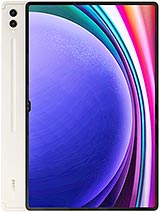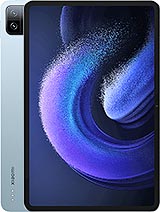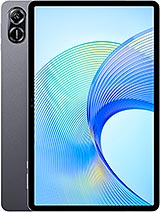Huawei MatePad Pro 13.2 review

HarmonyOS with familiar Huawei looks, productivity features
The MatePad Pro 13.2 runs HarmonyOS 4.0, the in-house operating system, which integrates Android API 31 (Android 12). This latest v4.0 is newer than the v3.0 we saw on previous MatePads, but it's very similar in look and feel. It's similar to the EMUI-labeled builds from the company too.
HarmonyOS 4 brings improved system widgets for your homescreen, bettered Super Device connectivity, and enhanced privacy and security. The OS still supports APK installs via Huawei's AppGallery, APK Pure or similar, and Gbox works just fine of you want to run Google apps.

One of the key new developments relates to the service (system) widgets. The now feature improved design and functionality. You can create stacks or groups, you can also have stacks of groups, too.
Secure Face Unlock is supported via the front camera and the extra 3D ToF system.
The multi-window functionality is not new, but it's among the most well-thought-out and full-featured implementations you can get.
You can launch apps into a split-screen view via a side menu, accessible by swiping in from either edge of the display and holding briefly to override the back gesture. Tapping an app from here spawns a floating window of it, and you can have two such windows open at the same time, with every subsequently launched one minimizing one of the earlier ones to a separate icon on the side, which in turn opens a separate task switcher.

To initiate the split-screen view, you need to have one app opened in full-screen. While in there, just ise the side menu and drag and drop an app from there to the desired side. You can even save split-screen combos for easier access in the future.

Oh, and while in split-screen, you can also have up to two pop-up windows on top, which brings the number of active apps at the same time up to four.
You can also copy and paste photos and text between windows by simply dragging and dropping.
In short - that's some properly great multitasking capability.
Other than that, it's the familiar look and feel of EMUI/MagicUI or however you're most inclined to call Huawei's UI efforts.



Homescreen • Notifications • Control Center
The Stylus Zone is a shortcut to a section on the AppGalery that combines all the stylus-centric apps - mostly for note-keeping, annotating PDFs or doing sketches.
Also, if you have the M-Pencil, you can drag from the upper right corner to open two modes - capturing content from an app or annotating any object or screen and saving it as an image or PDF.
If you like to draw stuff, then you should install Krita. It is a free app, yet incredibly powerful.

There is no DeX like mode on the MatePad, though its UI kind of works like desktop and the only thing that is not available here is putting files on your homescreen, a.k.a. a real desktop. It would be nice if Huawei added this option in the future.
Performance and benchmarks
The Huawei MatePad Pro 13.2 is the first device we meet running on the mysterious Kirin 9000S chipset, which stirred the technology pot a while back. The US immediately started an investigation into this chipset, while the rest of the world began to wonder what's inside.

Well, we finally know what is in there! You just need to adjust your hopes - it is not a flagship chipset, though Huawei was supposed to be about 7 years behind because of the US ban and yet it turned out it's nothing like that, more like 2-3 years and catching up.
The chipset is manufactured by a 7nm SMIC process. SMIC stands for Semiconductor Manufacturing International Corporation, which is partially state-owned.
There is an 8-core processor inside, which contains Huawei's Taishan cores - an upgraded version of the previous one used for servers Huawei cores of the same name. There is one Prime-like Taishan Main core clocked at 2.65GHz, three Taishan Middle cores working at 2.15GHz and four energy-efficient Cortex-A510 cores at 1.5GHz.
The Taishan cores support multi-threading and this is the reason why some hardware apps detect the CPU as 12-core - because the Taishan capabilities are read twice and this way we go 2+6+4, which is 12. One mystery solved!
The GPU is a custom Maleoon 910 MP4, meaning it has four computing cores. It is clocked at 750MHz.
The chip has a dedicated NPU, it supports LPDDR5X RAM, UFS3.1 storage.
On the communication side of things, this chip offers a custom 5G modem (in smartphones at least), Wi-Fi 6 and Bluetooth 5.2 support.
The MatePad Pro 13.2 comes in a Wi-Fi-only trim with 12/16GB RAM and 256/512/1TB storage. Our model is 12/256.
Huawei offers a special battery mode called Performance mode, which, once enabled, increases the temperature threshold for the CPU and the GPU. And while it does give a minor CPU and GPU boost in the scores, we didn't feel any real-life difference.
And now, it is benchmark time!
The Geekbench tests show the Kirin 9000S processor is as powerful as the Snapdragon 8 Gen 1 CPU.
The GPU is at least a generation behind the SD8 Gen 1, though, positioned between the Snapdragon 870 and 888. We are looking at the raw (offscreen) performance. The MatePad does worse than some other tablets because it has one of the highest screen resolutions.
Finally, AnTuTu also puts the Kirin 9000S performance close to the Snapdragon 870's.
Let's talk thermals and stability.
We tested the tablet for hours on benchmarks and our game test and it never became hot, just barely warm.
The MatePad Pro 13.2 scored 83% of CPU and 99% of GPU stability, which is excellent!
Overall, Huawei is on the right track with this chipset and we can see it advance it further in the upcoming years. The chip is stable, well-performing and competitive even. Let's hope there is no US ban violations inside, which will quickly turn for the worse for the company.
Reader comments
- magoenk
- 18 Mar 2024
- KiN
It said, "but if you use those apps via the GBox virtual machine, you will get 1080p HDR10 streaming" Does anyone know how to install this GBox virtual machine? Is it the same with GBox in AppGallery (I've tried but streaming is s...
- Ss
- 11 Jan 2024
- bEC
if you use it for media consumption, design tool and light laptop replacement maybe. the design is very good also huawei asking price usually bundled with charger, keyboard cover and pen which cost another 500$ ++ for samsung. At this size both doesn...
- Vin Aigre
- 08 Jan 2024
- 3g5
I am pro nothing, I don't care about this. What is important for me is reliability, innovation and performance. I found all of this with Huawei. What is the best between the us spyware or the cn spyware?



























